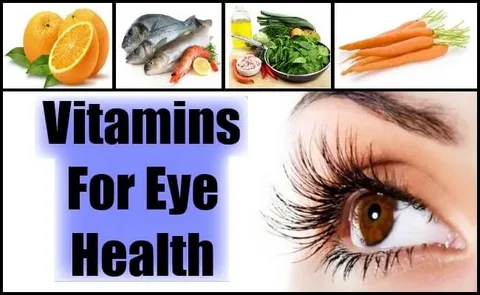Introduction
Vitamin D is crucial for overall health, particularly for bone strength and immune function. While it can be obtained from supplements and foods, sunlight remains the most natural and abundant source. Here’s how to optimize your sun exposure for adequate Vitamin D production.
Why is Vitamin D Important?
Importance of Vitamin D
Vitamin D plays a vital role in calcium absorption, bone health, immune function, and reducing inflammation. Insufficient Vitamin D can lead to conditions like rickets in children and osteomalacia in adults.
How Does Sunlight Provide Vitamin D?
Mechanism of Vitamin D Synthesis
When UVB rays from sunlight hit the skin, a cholesterol derivative in the skin is converted into Vitamin D3. This pre-vitamin D3 then undergoes further processes in the liver and kidneys to become active Vitamin D.
Factors Affecting Vitamin D Synthesis
Factors Influencing Vitamin D Production
Several factors impact how much Vitamin D your body can produce from sunlight:
- Latitude and Season: Sunlight intensity varies with latitude and is strongest near the equator.
- Time of Day: UVB rays are most intense between 10 am and 3 pm.
- Skin Color: Melanin reduces UVB penetration, so darker skin tones may require more sun exposure.
- Sunscreen Use: SPF 30+ reduces Vitamin D synthesis by up to 95%.
Safe Sun Exposure Guidelines
Guidelines for Safe Sun Exposure
While sunlight is essential, it’s crucial to balance exposure with skin cancer prevention:
- Expose Face and Limbs: Expose arms, legs, face, and back without sunscreen for about 10-30 minutes, depending on skin tone and UV index.
- Avoid Midday Sun: Opt for early morning or late afternoon sun to minimize UV exposure.
- Use Sunscreen After: Apply sunscreen after initial exposure to protect against skin damage.
Maximizing Vitamin D Absorption
Tips for Maximizing Vitamin D Absorption
Enhance your body’s ability to absorb Vitamin D effectively:
- Eat a Balanced Diet: Include Vitamin D-rich foods like fatty fish, fortified dairy, and mushrooms.
- Maintain Optimal Weight: Excess body fat can sequester Vitamin D, reducing its availability.
- Consider Supplements: If sunlight exposure is limited, consider Vitamin D3 supplements under medical advice.
FAQs on Getting More Vitamin D from Sunlight
Does Sunscreen Block Vitamin D Absorption?
Using sunscreen with SPF 30 or higher significantly reduces Vitamin D synthesis. It’s advisable to expose your skin to sunlight for 10-30 minutes before applying sunscreen to balance Vitamin D production and skin protection.
How Much Sunlight Do I Need for Adequate Vitamin D?
The amount of sunlight needed varies based on factors like skin type, time of day, and geographic location. Generally, 10-30 minutes of midday sun exposure to arms, legs, face, and back a few times a week is sufficient for most people.
Can I Get Enough Vitamin D in Winter?
In regions with limited sunlight during winter, getting enough Vitamin D solely from sunlight may be challenging. Consider Vitamin D-rich foods and supplements during these months.
What are the Risks of Too Much Sun Exposure?
Excessive sun exposure increases the risk of skin aging, sunburns, and skin cancer. Balance sun exposure for Vitamin D production with skin protection strategies like using sunscreen and wearing protective clothing.
Are Tanning Beds a Good Source of Vitamin D?
Tanning beds emit UVA rays primarily, which do not stimulate Vitamin D synthesis. They can increase the risk of skin cancer and premature aging, so they are not recommended for Vitamin D production.
Does Age Affect Vitamin D Synthesis?
As we age, our skin’s ability to produce Vitamin D decreases. Older adults may need more sunlight exposure or higher dietary intake to maintain adequate Vitamin D levels.
Can I Get Vitamin D Through Window Glass?
Glass blocks UVB rays, which are necessary for Vitamin D synthesis. Sun exposure through windows does not contribute significantly to Vitamin D production.
What Role Does Geography Play in Vitamin D Synthesis?
Geographical location affects the angle of UVB rays. Closer to the equator, sunlight is more intense year-round, allowing for more efficient Vitamin D synthesis compared to higher latitudes.
How Does Skin Color Impact Vitamin D Production?
Melanin in darker skin absorbs UVB rays, reducing Vitamin D synthesis. People with darker skin may need longer sun exposure to produce adequate Vitamin D compared to those with lighter skin tones.
Can I Overdose on Vitamin D from Sunlight?
Unlike Vitamin D from supplements, it’s difficult to overdose on Vitamin D from sunlight alone because the body regulates its production. However, excessive sun exposure increases the risk of skin damage.
Conclusion
Harnessing the benefits of sunlight for Vitamin D production requires understanding its mechanism, optimal exposure times, and balancing sun safety with health benefits. By following these guidelines, you can maintain healthy Vitamin D levels naturally.
- What Are The Real Effects Of Breadcrumbing On Your Mental Health? - June 1, 2025
- What Is Situationship Creep And How To Avoid Getting Stuck In Limbo - June 1, 2025
- Nu-Derm Skin System Near Holmbury St Mary, Surrey - June 1, 2025



